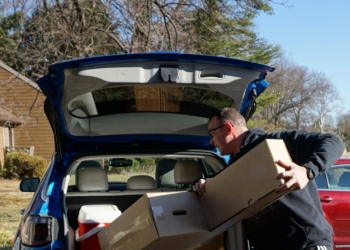The Department of Defense (DOD) released the Basic Allowance for Housing (BAH) rates for 2021 this week. On average, BAH rates have increased by 2.9% which equates to about $23 billion, according to a release sent out by the DOD. While some duty stations will see a significant increase in BAH rates, others will see a significant decrease.
Want to calculate your 2021 BAH rate? Click here.
Changes in BAH rates are not new. The DOD does an annual examination of current BAH rates and determines if the rate for a particular duty station should increase or decrease. Approximately 300 housing areas in the United States are examined each year by using the information provided by each branch of service, local commands and military housing private party ventures (PPV) offices. The information is then used to determine if adequate compensation is being provided with the current BAH rate.
What is BAH?
According to the DOD website, BAH is defined as “U.S. based allowance prescribed by geographic duty location, pay grade and dependency status. It provides uniformed Service members equitable housing compensation based on housing costs in local civilian housing markets within the United States when government quarters are not provided. A uniformed service member stationed outside the U.S., including U.S. territories and possessions, not furnished government housing, is eligible for Overseas Housing Allowance (OHA).”
In other words, BAH provides service members and their families with compensation compared to the average amount of rental market cost in their current duty station in order to cover housing costs and utility expenses (including electricity, heat and water/sewer).
You can see the breakdown of your duty station’s BAH rate in terms of percentage allocated towards rent versus utilities here.
Is BAH meant to cover everything?
The short answer is no. BAH should cover about 95% of a service member’s housing expenses (to include rent and utilities), with about 5% being an incorporated out-of-pocket expense. According to the press release put out by the DOD, the out-of-pocket expense for service members generally range from $70 to $158 monthly. These amounts vary by pay grade and dependency status. The DOD states that compared to the civilian market, the BAH rates and out-of-pocket expenses are competitive.
“Even with the out-of-pocket expense amounts, the overall military pay and benefits package remains competitive and healthy,” a press release said.
Comparatively, in 2000 BAH rates were only meant to cover 80% of average rental and utility costs. In 2005, BAH rates covered 100% of average rental and utility costs. The percentage of out-of-pocket cost has slowly increased to 5% over the past 15 years.
A service member’s out-of-pocket expenses will vary depending on their rank, their dependency status and their choice of housing. A service member who lives off base may see more out-of-pocket expenses while a family living on base may see less out of pocket expenses. But it can go both ways —in some areas a family may see more out-of-pocket expenses while living on base compared to those who chose to live off-base.
If BAH rates go down…
If the BAH rate at your current duty station goes down, you will not see a decrease in your BAH if you are staying in that location. According to a statement released by the DOD, “No matter what happens to measured housing costs … an individual member who maintains uninterrupted Basic Allowance for Housing eligibility in a given location will not see his/her Basic Allowance for Housing rate decrease.”
This ensures that anyone who has made lease or other commitments based on the previous year’s BAH rate will still be able to maintain those commitments without incurring any additional out-of-pocket costs.
If BAH rates go up…
If BAH rates go up, you will see the designated increase in your BAH rate in the new year. According to the Defense Travel website, “an individual is authorized the [Jan. 1] rate for the individual’s grade and location or the housing allowance being paid on [Dec. 31] of the previous year, whichever is larger.”
This means that if the BAH rate for Jan. 1 at your current duty stations is higher than the Dec. 31, that you will receive the higher amount starting on Jan. 1, 2021.
If you live on base…
If you live on base and the BAH rate is decreasing in 2021, the military housing PPV will still continue to receive the old rate.
If you live on base and the BAH rate is increasing in 2021, the military housing PPV will receive the higher rate. You will not receive the additional prorated difference.
If you live off base…
If you live off base and the BAH rate is decreasing in 2021, you will still continue to receive the old rate so that you are able to maintain any long-term lease or other contractual commitments made according to the 2020 BAH rates.
If you live off base and the BAH rate is increasing in 2021, you will receive the higher rate. The prorated difference can be used for any personal expenses including rent, mortgage payments, utilities and other expenses.
Service members and their families can calculate their BAH payment by using the Basic Allowance for Housing calculator.
Do you have more questions? Visit the Defense Travel Management Office website for frequently asked questions regarding BAH.
Read comments






































